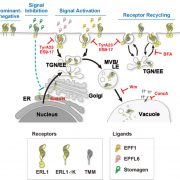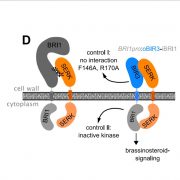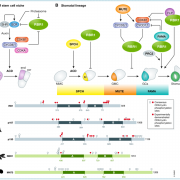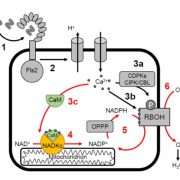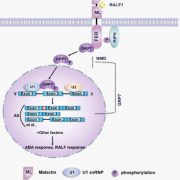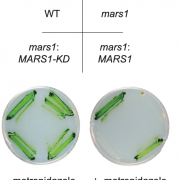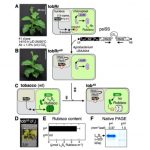Review: Emerging mechanisms to fine-tune receptor kinase signaling specificity (COPB)
 Maybe it’s because I’ve spent too much time in lockdown, but sometimes I find studies on cell signaling a bit impenetrable. Fortunately, this excellent review by Galindo-Trigo et al. has arrived, which elegantly walks the reader through the crowded world of receptor-like kinases and “how cells can exert highly localized control over the assembly, interaction and composition of such complexes in order to attain essential cellular output specificity.” As the authors point out, the fact that many signaling components function in multiple diverse pathways provides opportunities for coordination between these pathways (by acting as a node), but also makes it hard to comprehend how signals are properly deciphered. The review takes as an example FERONIA, which participates in many diverse signal and response pathways; its extracellular domain interact with peptides, cell wall components and extensins, and it forms complexes with other RLKs, small LLG proteins, and immune receptors. Specificity of signaling is conferred by small structural variations and the use of different phosphorylation sites, but also dynamic protein trafficking, which includes endocystosis to remove RLKs from the cell surface and also the formation of signaling clusters within membranes. Reading this review brought me one step closer to grasping the nature of these complex and busy but incredibly well orchestrated signaling networks, and the illustrations are excellent. (Summary by Mary Williams @PlantTeaching) Curr. Opin. Plant Biol. 10.1016/j.pbi.2020.05.010
Maybe it’s because I’ve spent too much time in lockdown, but sometimes I find studies on cell signaling a bit impenetrable. Fortunately, this excellent review by Galindo-Trigo et al. has arrived, which elegantly walks the reader through the crowded world of receptor-like kinases and “how cells can exert highly localized control over the assembly, interaction and composition of such complexes in order to attain essential cellular output specificity.” As the authors point out, the fact that many signaling components function in multiple diverse pathways provides opportunities for coordination between these pathways (by acting as a node), but also makes it hard to comprehend how signals are properly deciphered. The review takes as an example FERONIA, which participates in many diverse signal and response pathways; its extracellular domain interact with peptides, cell wall components and extensins, and it forms complexes with other RLKs, small LLG proteins, and immune receptors. Specificity of signaling is conferred by small structural variations and the use of different phosphorylation sites, but also dynamic protein trafficking, which includes endocystosis to remove RLKs from the cell surface and also the formation of signaling clusters within membranes. Reading this review brought me one step closer to grasping the nature of these complex and busy but incredibly well orchestrated signaling networks, and the illustrations are excellent. (Summary by Mary Williams @PlantTeaching) Curr. Opin. Plant Biol. 10.1016/j.pbi.2020.05.010


